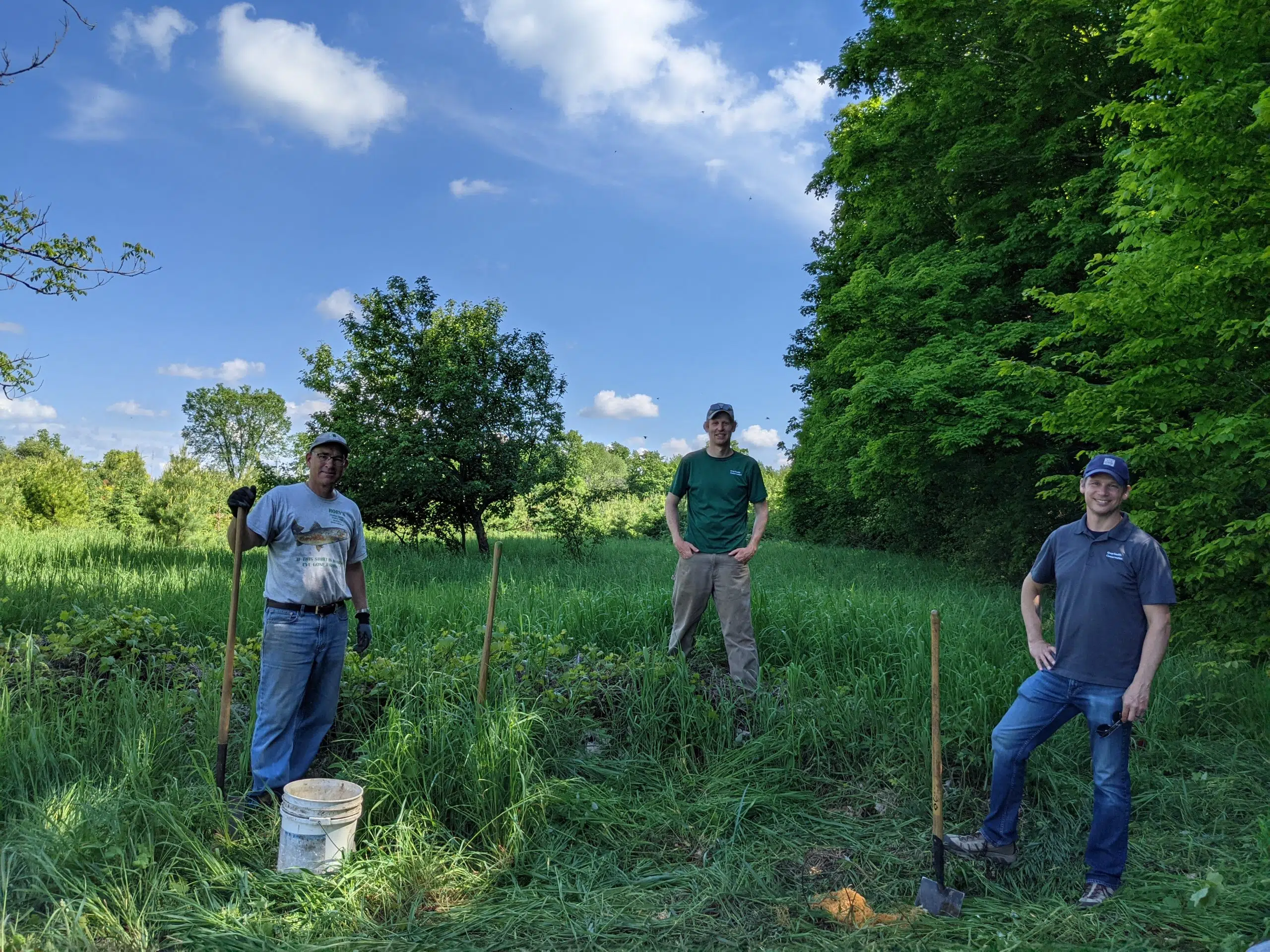A collaborative project between a local family and the Grey Sauble Conservation Authority (GSCA) has resulted in the planting of 6,000 trees in Grey Bruce.
Wrapping up over the last week, GSCA Forestry Coordinator Mike Fry says the project is based on the research gathered by an engineer from Owen Sound, Jeff Graham.
Graham’s data indicated wealthy countries produce high carbon dioxide emissions per person, with Canada producing about 20 metric tons of CO2 per year.
Graham found a young growing tree is capable of absorbing around 20 kilograms of CO2 per year. He calculated 6,000 trees needed to be planted to help offset the carbon footprint of a family of six, 1,000 per person.
“It struck me that Canadians have a moral duty to take responsibility for their emissions, and if affordable, help pay to reduce or offset their carbon emissions,” says Graham.
With the initial conversations about planting trees occurring in late 2019, early 2020, Fry says they were hoping to start the tree planting project last year. Due to the Covid pandemic however, those plans were put on hold.
Fry notes through a financial donation of around $9,000 from Graham, GSCA staff, with some assistance from the Graham family, were able to plant the trees on two GSCA properties, Isaac Lake in South Bruce Peninsula, and Griersville in the Municipality of Meaford.
When asked if it’s possible to plant more trees to offset more carbon emissions, Fry notes it is theoretically possible, but it would also come with several issues.
“Planting more trees is going to offset more carbon or sequester more carbon, I think we might run into some issues like putting the right tree in the right spot. Just putting trees everywhere may not always be the solution, just in terms of trying to balance land use with agricultural, like just putting a tree that is just not going to grow,” says Fry.
In response to those who may not have the space on their own property to grow one of these trees, the GSCA is looking at expanding the program and offering it to others who may be interested.
“I think we are all seeing the impacts of climate change and the changing of the environment we have going on,” says Fry. “Anything that people can do to help mitigate those impacts is fantastic and especially going through a tree planting project like this, there are other benefits.”
According to a release, the native tree species planted will remove CO2, improve soil retention across the watershed, and in combination with the ongoing tree planting from the GSCA, also increase the resilience to the impacts of flooding, drought and other severe weather conditions.
The trees will also benefit the area by helping restore and increase forest cover, create more wildlife habitats and improve water quality.
The species of tree planted was chosen with its growing needs like soil type and moisture requirements in mind, and with the intention they will grow for at least the next 80 years.
This project is in addition to the GSCA’s goal of planting 84,000 trees around their watershed this year.



